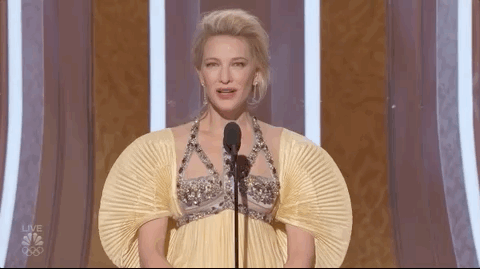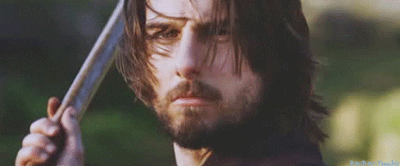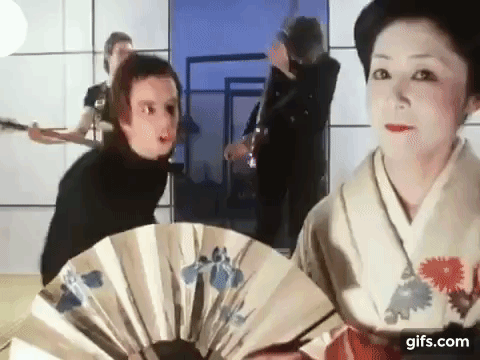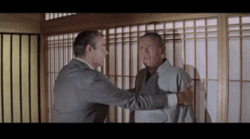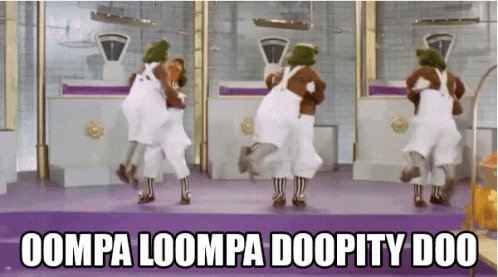Listen to the companion Raven Bond podcast here!
Released: June 1967
Producers: Harry Saltzman & Albert R. Broccoli
Director: Lewis Gilbert
Written by: Roald Dahl
Plot:
When a manned American spacecraft is “eaten” by a mystery chomping space machine, nuclear war threatens to break out between the US and USSR. James Bond, who’s been “killed off”’ and buried at sea in an attempt to throw his numerous enemies off his scent, is dispatched to Japan to meet up with secret service chief Tiger Tanaka and discover that the real brains behind the operation is an old foe.
Famous For:
The first full appearance of SPECTRE’s No 1, aka Ernst Stavro Blofeld
The massive, million-dollar lair inside an extinct Japanese volcano
Little Nellie, the tricked-out gyrocopter
Sean Connery in THAT MAKEUP
Oh lordy.
If Ian Fleming was a complicated man, then his wartime friend, fellow author and You Only Live Twice screenwriter Roald Dahl was doubly so.
Both traded in secrets during World War Two - but while Fleming was in Naval Intelligence, Dahl spent a good year being employed by His Majesty’s Government in the “British Security Co-ordination”, part of M16.
His role was to help counter ongoing isolationist and anti-war views in America with his own tales of bravery and derring-do against the Nazis. Apparently, one way he did this was by flirting - and more - with wealthy and influential American women.
Yes, Roald Dahl, the strapping 198cm tall Norwegian-Welsh creator of some of the most beloved children’s literature of all time, was paid to wave his Willy Wonka for the war effort.
There’s evidence he didn’t relish the job - after all, he had been reassigned after several years in the Royal Air Force as a fighter pilot, seen the face of battle in the Mediterreanean and even escaped with a smashed skull after an emergency landing in the Egyptian desert.
But the fact remains he did have quite the diplomatic missionary position.
That’s a pretty good background for a Bond screenwriter.
But it’s worth spending some time in this particular retrospective essay on these two spies-turned-writers, as You Only Live Twice is the first Bond film that diverges significantly from the plot of the book, and yet Dahl left IN the most jarring element: James Bond in yellowface.
Ohhhhhhhh lordy.
You Only Live Twice was the conclusion of the so-called “Blofeld Trilogy” of Bond novels that began with Thunderball and continued with On Her Majesty’s Secret Service. The book is more sombre and reflective in tone than previous, and incorporates Fleming’s increasing ennui with Britain’s declining influence and a heart attack making him face his own mortality.
In the book, Bond travels to Japan to bargain for information with the Japanese head of secret intelligence, Tiger Tanaka. Tanaka asks him to kill a European doctor who has established a “Garden of Death” at an old castle by the sea, where he lures local people in to kill themselves.
Bond recognises the doctor as Blofeld and takes the mission. Tanaka makes him over to look Japanese, and Bond infiltrates the castle as a mute miner. He eventually duels Blofeld, who’s taken to getting around his little empire in full Samurai armour, and kills him in a violent rage.
But that’s not the end of the book - Bond suffers a head injury while escaping, and Kissy Suzuki, a film star who helped “transform” Bond decides not to reveal his true identity because she falls pregnant to him. Bond leaves her at the end of the book to go to try to find out who he is.
I know, right? Why didn’t we see that movie?
It turns out Roald Dahl thought You Only Live Twice read like a travelogue, most of the plot was rubbish, and wouldn’t make for an engaging story onscreen.
It was merciful then, one supposes, that Fleming had died in August 1964, so wasn’t around to hear his sometime friend sound off on his creative vision like that.
Dahl was brought in on the film project when regular writer Richard Maibaum was unavailable. He hadn’t written a mainstream movie screenplay, and was given six weeks to come up with a first draft. He later told Playboy that producers Saltzman and Broccoli had given him free reign with the script - except for what they allegedly called the “Bond formula” - a villain, and three girls for Bond to seduce.
Given only Kissy Suzuki existed in the novel, Dahl had to come up with Tanaka’s agent Aki and SPECTRE Number 11 Helga Brandt to round out his story, which he decided to base on Doctor No, utilising that whole “bad guy with a sweet HQ” aesthetic.
He used the ongoing tension of the Space Race, already foreshadowed in that first film, to build out the plot of spaceships getting chomped mid-mission by SPECTRE to provoke a Cold War hot moment.
I can see how that might be more topical than a Japanese Garden of Death and Blofeld going full Tom Cruise.
So maybe this gives some reason why - despite junking a bunch of cool shit - he kept the now-insanely-weird “Turning Japanese” elements.
Pictured: Japanese woman doing what we all are feeling right now.
Perhaps the inclusion of Bond going undercover, with an involved ninja training sequence and a lengthy traditional wedding ceremony, allowed the film to retain the Japanese sensibility that had so enraptured Fleming.
The novel’s Japanese setting was inspired by Fleming’s 1962 visit to the country, in which he was shown around by notorious Australian journalist, raconteur and alleged spy Richard Hughes, as well as a Japanese friend, Tiger Tanaka (both made it into the novel as characters; Hughes as Dikko Henderson). Fleming seemingly got super into the culture; the number of teenage white girls I see tottering around the Queen Street Mall as Lolita girls, inspired by the fashions of Harujuku, is testimony to Japan’s ability to draw so many to its fascinating cultures, old and new.
Maybe this was Dahl’s way of paying tribute to his friend.
Maybe it was simply that compared to the other nutso elements of the book, the conceit of Bond having to be disguised actually made sense to Dahl as a plot contrivance.
Or maybe I’m just trying to find excuses for Roald Dahl. It’s entirely likely this was all just regular white guy insensitivity and exoticisation at best, racism at worst.
It’s good to grapple with this stuff as the 21st century marches on. Will I vow to never watch You Only Live Twice ever again because of this element? Probably not. Will I tense when I do see it? Yes. Will it stand as a reminder that I have to think critically about how cultures are portrayed onscreen, place them in historical context and reason out why certain representations are harmful? I do think so.
If the “Turning Japanese” sequence is this film’s most skin-crawlingly cringeworthy aspect; then SPECTRE’s incredible volcano lair and the chomping spaceship sequences are the exact opposite.
Production designer Ken Adam’s magnum opus volcano lair set cost $1 million alone - the total production budget of Dr No, just five years earlier. 45 metres high and with a working (albeit rickety) monorail, it’s a shame Pinewood Studio didn’t save it for tourism purposes.
So. Fricking. Good.
First-time Bond director Lewis Gilbert imbues the space sequences with a real sense of terror. When the space-walking astronaut has his lifeline cut by the closing maw of the unknown craft, his voice is cut off mid-sentence, and his body is left to drift silently through the void. John Barry’s exceptional score makes the moment soar.
Later, when the cosmonauts experience the same attack on their own launch, there is no need for subtitles or any explanatory cutaways, because we’ve already seen what’s going to happen. We can only watch, both resigned to and excited by the inevitable, as the chorus of Russian cries increase.
Little Nellie the gyrocopter is a fun, original bit of kit that gets a great shoot-out sequence while Bond is scoping out the apparently extinct and untouched volcano.
The set-up that Bond is killed “on the job” in Hong Kong, only to be buried at sea and return to life onboard a Royal Navy submarine (complete with M’s office, Moneypenny’s reception room and a whole lot of sailors in crisp white shorts), is a delightful flight of whimsy. It’s perfectly, stupidly Bond, and the classic “Permission to come aboard, sir?” makes me giggle every time.
Apart from his views on the role of women in domestic relationships, Tiger Tanaka is a fantastic character, almost a spiritual successor to From Russia With Love’s Ali Kerim Bey (and he survives!). His overly convoluted way of bringing Bond into his city office via means of a chase with Aki and a concealed slide is hilarious; his ninja training school montage is awesome, and the ninja attack he leads on the SPECTRE volcano lair for that final massive battle is just pure adrenaline-fuelled Bond goodness.
I do love the cameo by Charles Gray (a future Blofeld) as Henderson, Bond’s local contact, who gets stabbed in the back by a SPECTRE assassin about three minutes into their first meeting. The image of Henderson’s facing freezing, and Bond pulling him forward and finding the knife is seared into my brained from childhood.
However, while Roald Dahl might have been cavalier with a lot of Fleming’s original elements, there’s a bunch of stuff introduced in his version that for me created giant peach-sized confusion.
You search for “giant peach GIF” and this is what the internet provides.
Why does Bond brag to Moneypenny that he took a first in Oriental Languages at Cambridge, but then the only Japanese phrase he seems to say is “Domo arigato”?
Why is Bond torpedoed onto the coastline of Japan, with no supplies, and then turns up in Tokyo in a suit?
Why after knowing him for only a few hours, does Aki trade places with one of Tanaka’s massage girls and make out with Bond?
Why does Helga Brandt sleep with Bond? She thinks he’s an industrial spy after chemicals, and seems to let herself be seduced for… reasons? And then she takes Bond in a plane, he thinks they’re getting her away, but actually she parachutes out of the plane in an overly-complicated murder scheme? Why not just shoot him when she has him tied up in her bedroom? At that point she doesn’t even know he’s 007, because 007’s death has been reported in the papers. So why the rigmarole with undeniably riskier option?
It’s plane ridiculous.
Why couldn’t Bond go directly back to Tanaka, Aki & Q after fighting off Blofeld’s attack helicopters because Russia was about to launch its spacecraft? What does he do with Little Nellie? How does he wind up taking a regular helicopter to Tanaka’s ninja school?
Why does Tanaka insist Bond train as a ninja and take a wife before they can investigate goings-on at the volcano? Kissy Suzuki, as it turns out, lives alone as her parents are dead. The ceremony does not take place IN the fishing village she’s from, so who is it for?
Also, why does Bond pout like a petulant schoolboy when Tanaka tells him his chosen wife has “a face like a pig”? Like, it’s a mission, not a lifelong commitment. And later, why is Bond all pissy at Kissy when she insists on separate beds in the village? Because, you know, it’s business?
Why is Bond not given any other comms equipment by Q, forcing Kissy to climb down the volcano, swim across the channel to the mainland, alert Tanaka, and then head back over with the ninja team to the volcano (without anybody offering her a change of clothes from her bikini)?
Giving the identity of SPECTRE’s chief had been teased since Dr No, his final reveal and confrontation with Bond doesn’t quite pay off in the way one might hope. It’s still great to see Donald Pleasence, facial scar attached, peek out at Bond and introduce himself in clipped, high tones.
His interpretation of the villain is maniacal, for sure, but you can see why it’s not that much of a leap to the high-camp comedy of Austin Powers’ Dr Evil.
Also, it must be recognised that you first see Blofeld when he peers out from behind the buttocks of his personal bodyguard Hans. He then pats Hans’ butt aside so Bond can see him clearly. Our collective minds have remembered it as a full swivel around in the chair, but it’s not at all. It’s a very strange directorial choice.
For some reason, Pleasence’s Blofeld reminds me of notorious and now-retiring Australian talkback radio host Alan Jones. If you know what I mean, let me know.
Ultimately Bond escapes from Blofeld, and Blofeld manages to trip the Volcano Self-Destruct Button before getting away… somehow. It’s slightly anti-climactic and doesn’t really set up a great Must. Have. Revenge motivation for Bond.
Although I can’t hate on Blofeld too much - after all, he does have a really fricking amazing pool full of flesh-eating piranhas.
And as for Sean Connery himself… at times he really does give off an “over it” vibe. He resigned from the series during the filming of You Only Live Twice, and apparently was not even on speaking terms with producer Cubby Broccoli during the shoot. It makes it doubly intriguing that he would agree to return to Bond for Diamonds Are Forever - but that’s a story for another
Finally, the Bond girls in this film have a different feel to the ones we’ve encountered previously.
Helga Brandt is very much cut in the style of Fiona Volpe from Thunderball; and yet, she is not nearly half as compelling. As previously mentioned, her seduction of Bond is strange; it seems to happen simply because Dahl was told “Bond must shag three women”.
Mie Hama and Akiko Wakabayashi were both stars of the Toho Studios in Japanese, famous for being the creators of Godzilla and his monstrous brethren. Neither spoke much English, and received training in England before filming began. Quite late in proceedings, they swapped roles, because Wakabayashi’s English was better, so she took on the Aki role, which had more lines. Mia Hama became Kissy, but was still eventually dubbed (as was Tetsuro Tamba as Tanaka).
There’s something very… innocent… about both women’s portrayal onscreen. Aki sleeps with Bond fairly quickly, but their intimate scenes feel more chaste than previous encounters. When Aki is poisoned, it’s as she sleeps by Bond’s side, both clothed and tucked in cosily together. It’s not a romp scene; Marcy’s Playground would smell no sex and candy here.
Of course, there’s the matter of Tanaka’s eye-twitchingly awful description of Japanese gender dynamics: “Men come first. Women come second”, and Bond’s retort “I may retire here”. Bond happily takes up Tanaka’s offer of massage and implied sex with any choice of girl from his stable.
To be honest, that was the scene that really made me cringe, possibly even more than the yellowface. I am a white woman, so I responded more viscerally in that moment because of my extreme distaste for any embrace of women’s subservience. I must imagine Asian people to have a similar hackle-raising response to the yellowface.
And besides, Aki and Kissy are secret agent operatives; they’re both clever and resourceful and brave. Kissy literally spends most of her time in a white bikini, a la Honey Ryder. And to her credit, she marches up the side of a freaking volcano in that damn thing, and doesn’t even get a change of clothes when she swims back to alert Tanaka (fun fact: Connery’s wife Diane Cilento doubled for Mia Hama in the swimming scenes).
“Don’t worry, old man, I’ve got you.”
I wonder if the more demure Japanese Bond girls came about due to a desire to be more respectful to these two women who didn’t speak the language fluently, and were thrust into a different style of film-making.
Maybe it was a desire not to offend, rooted in a belief or stereotype garnered from Fleming’s novel that Japanese women are somehow more delicate than hedonistic European girls with their mini-skirts and birth control.
Maybe we can chalk that one up to Roald Dahl. Maybe he had a sense of duty to not screw over these women like those American ones in WW2. Maybe he was a bit more respectful.
And it’s not like he created characters who initially resembled African pygmies before changing their skin tone and hair colour in later editions of a book, and which were subsequently changed again for a film…
Ohhhhhhh LORDY.
Thank you for reading this instalment of the James Bond Retrospective! If you enjoyed it, you can sign up to support the series and my other writing/podcasting efforts via my Patreon page. Thanks to all of you who are already members; your support is truly invaluable.
You can listen to the companion Raven Bond You Only Live Twice podcast here:
Stu and I have are also ranking the Bond films as we watch and podcast about them. Here’s how we stand:
See you next week for On Her Majesty’s Secret Service, and a new Bond!




